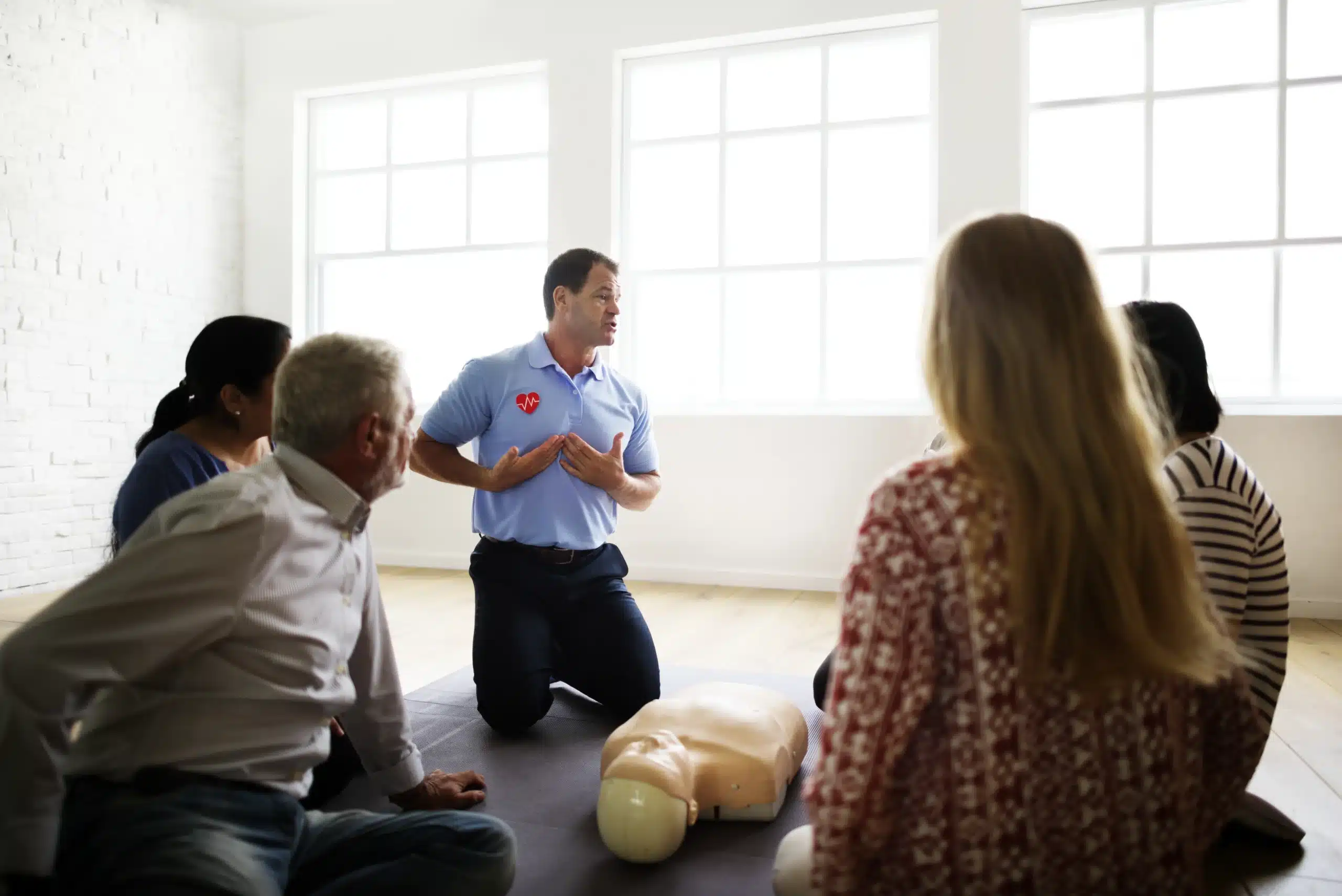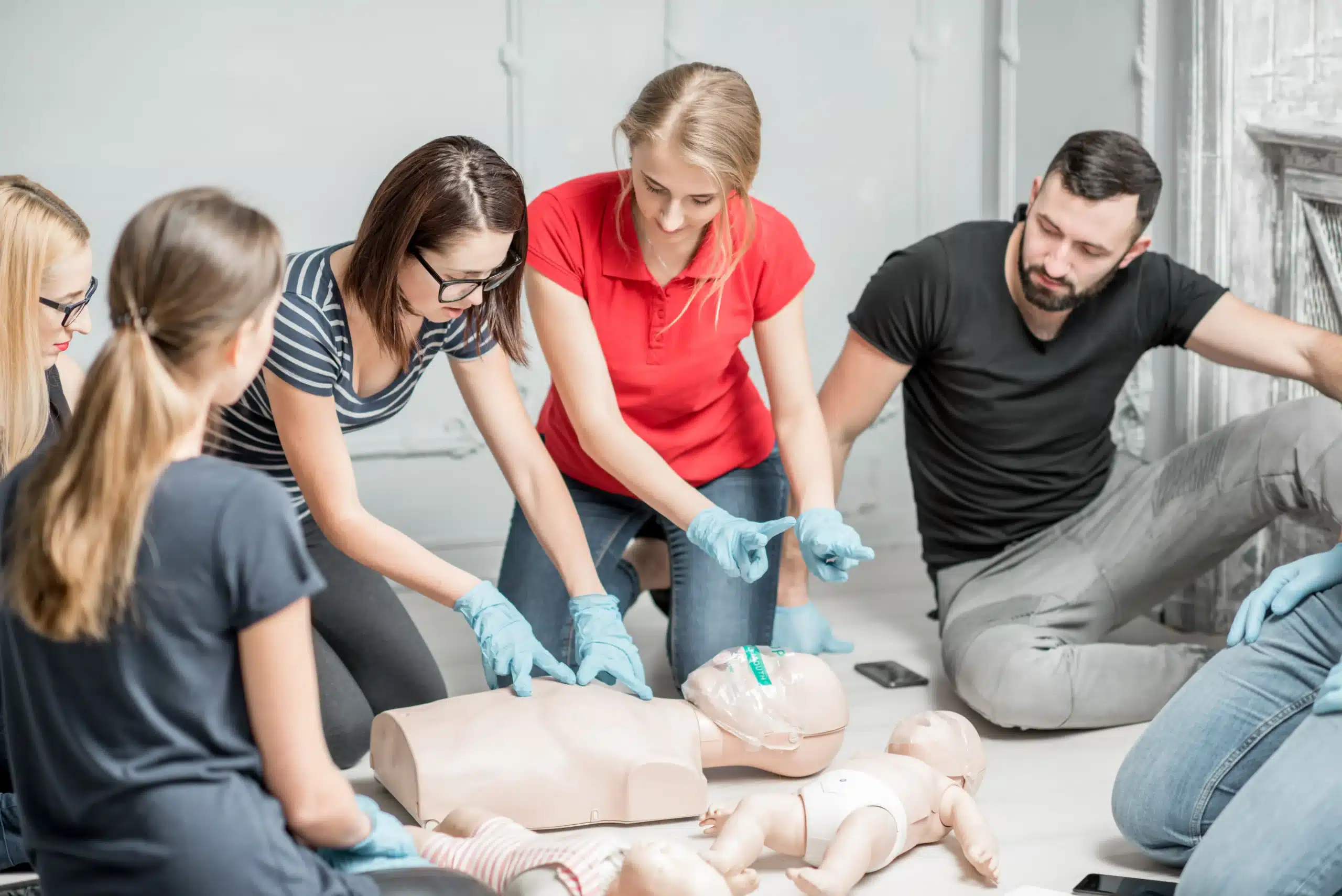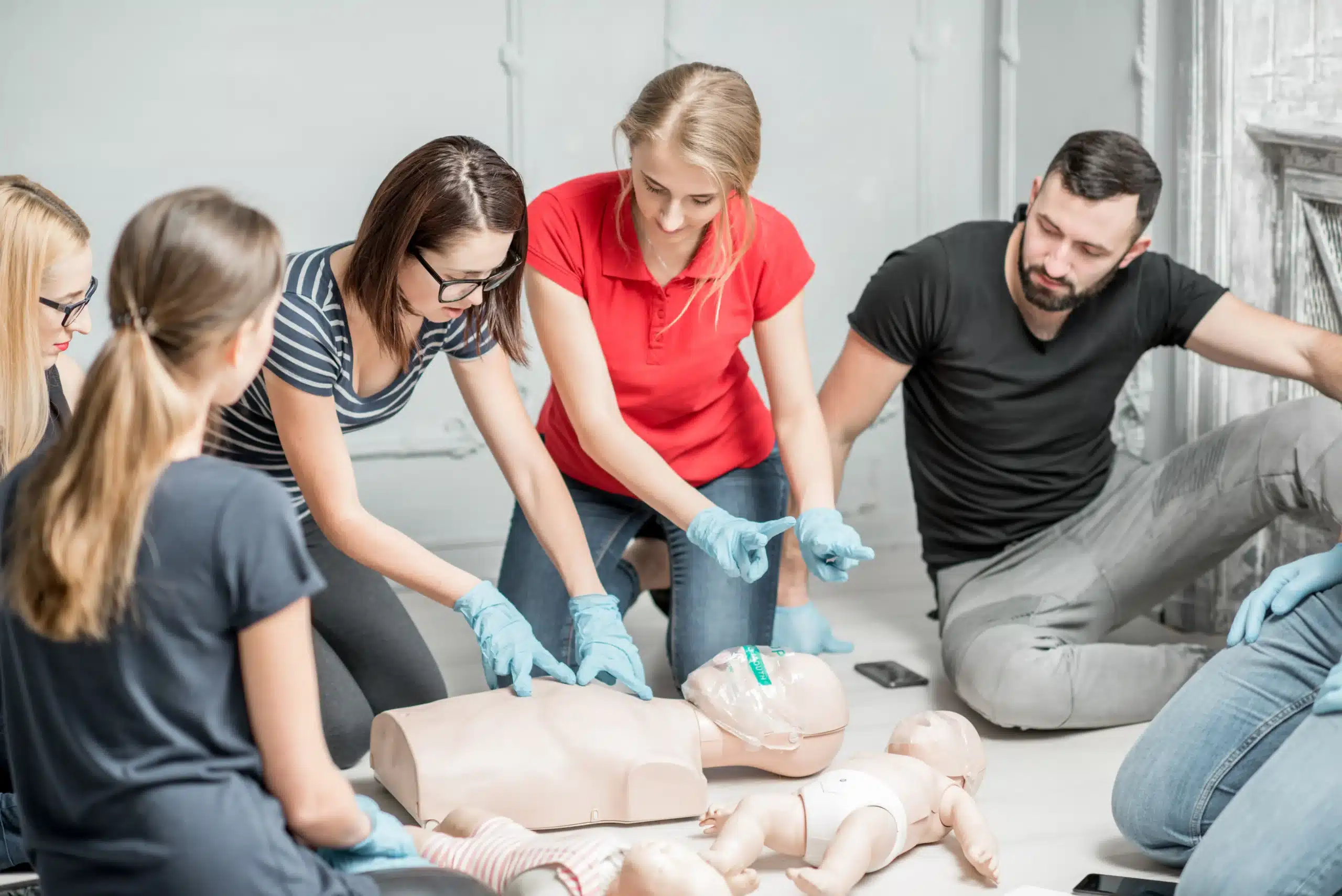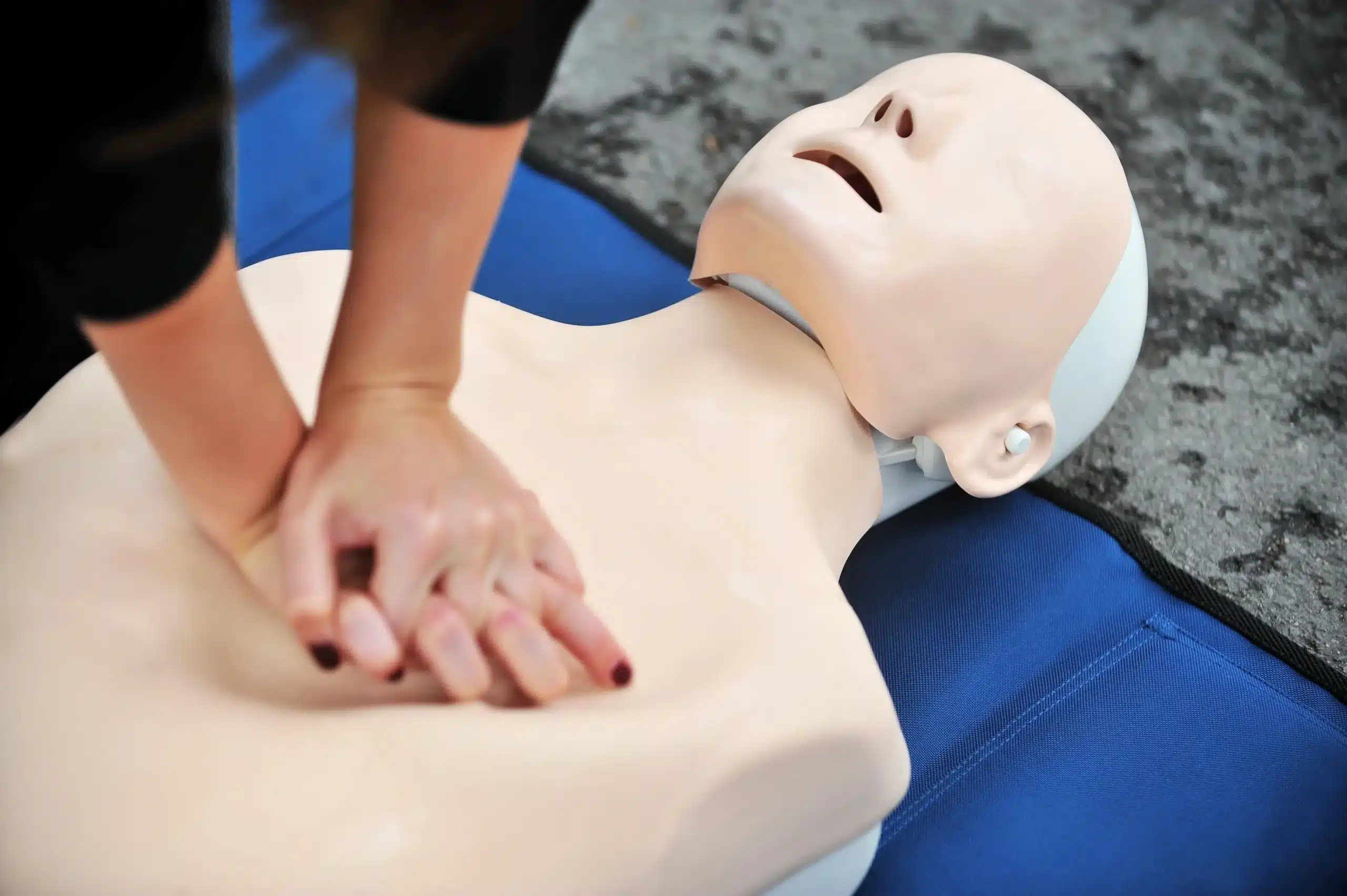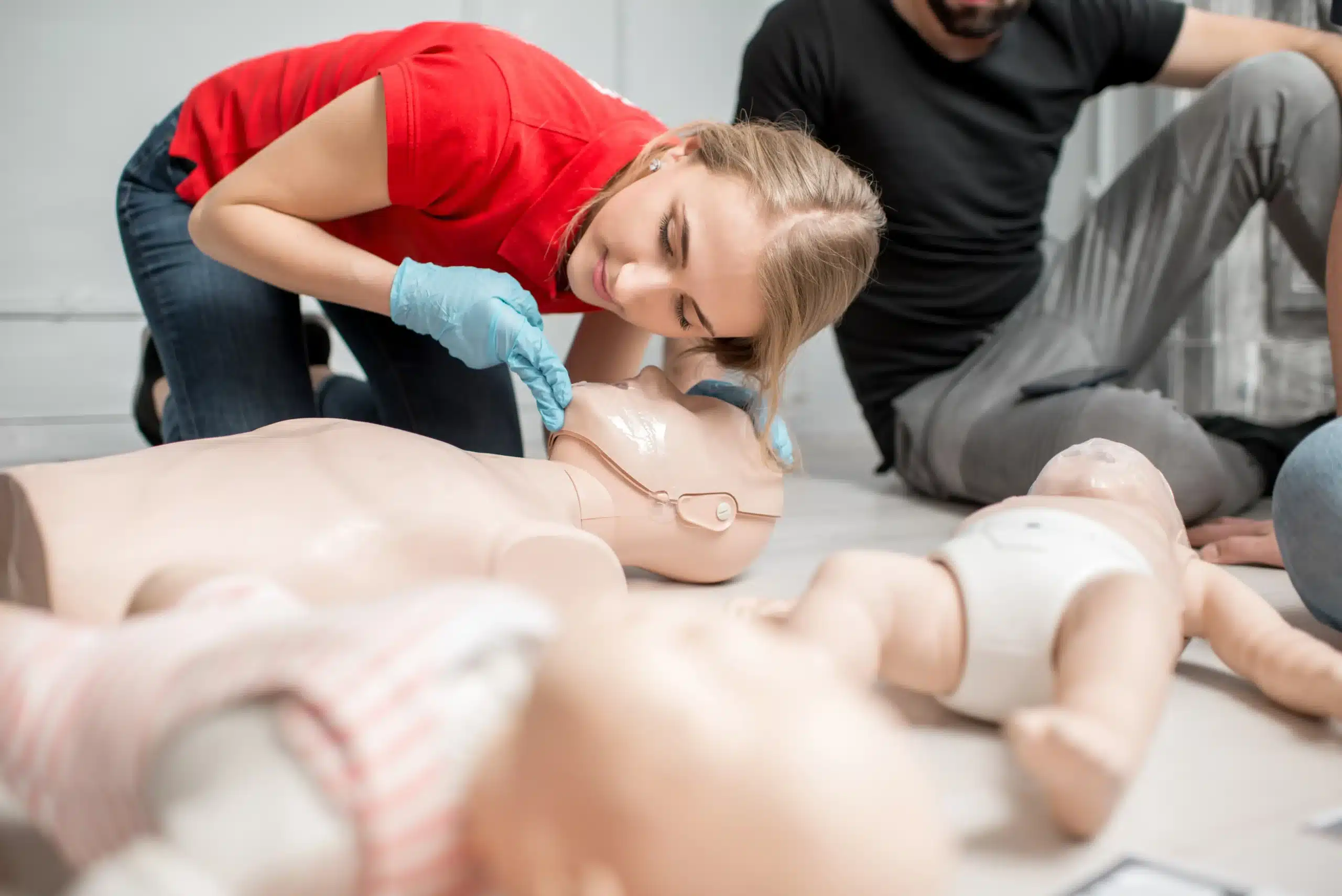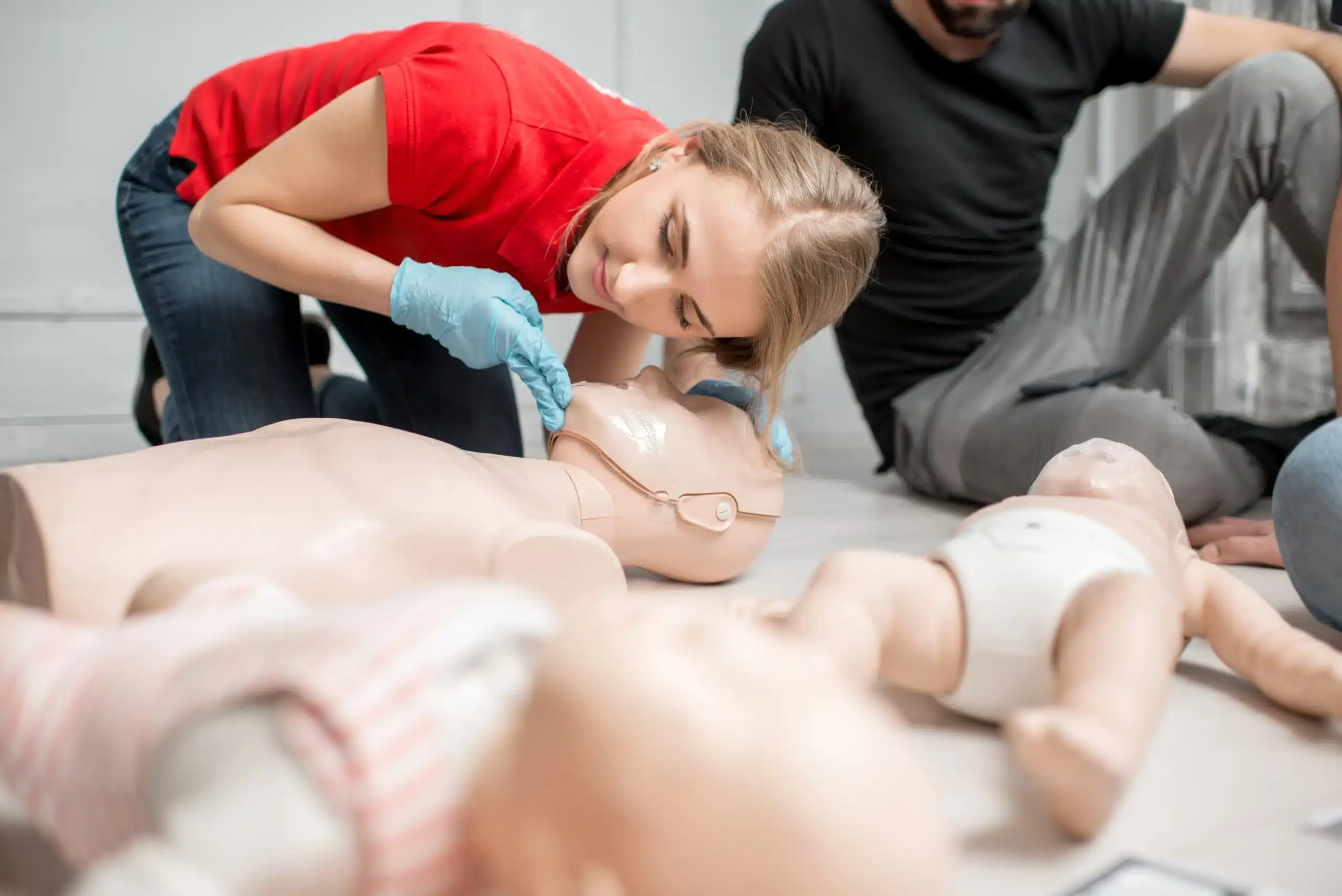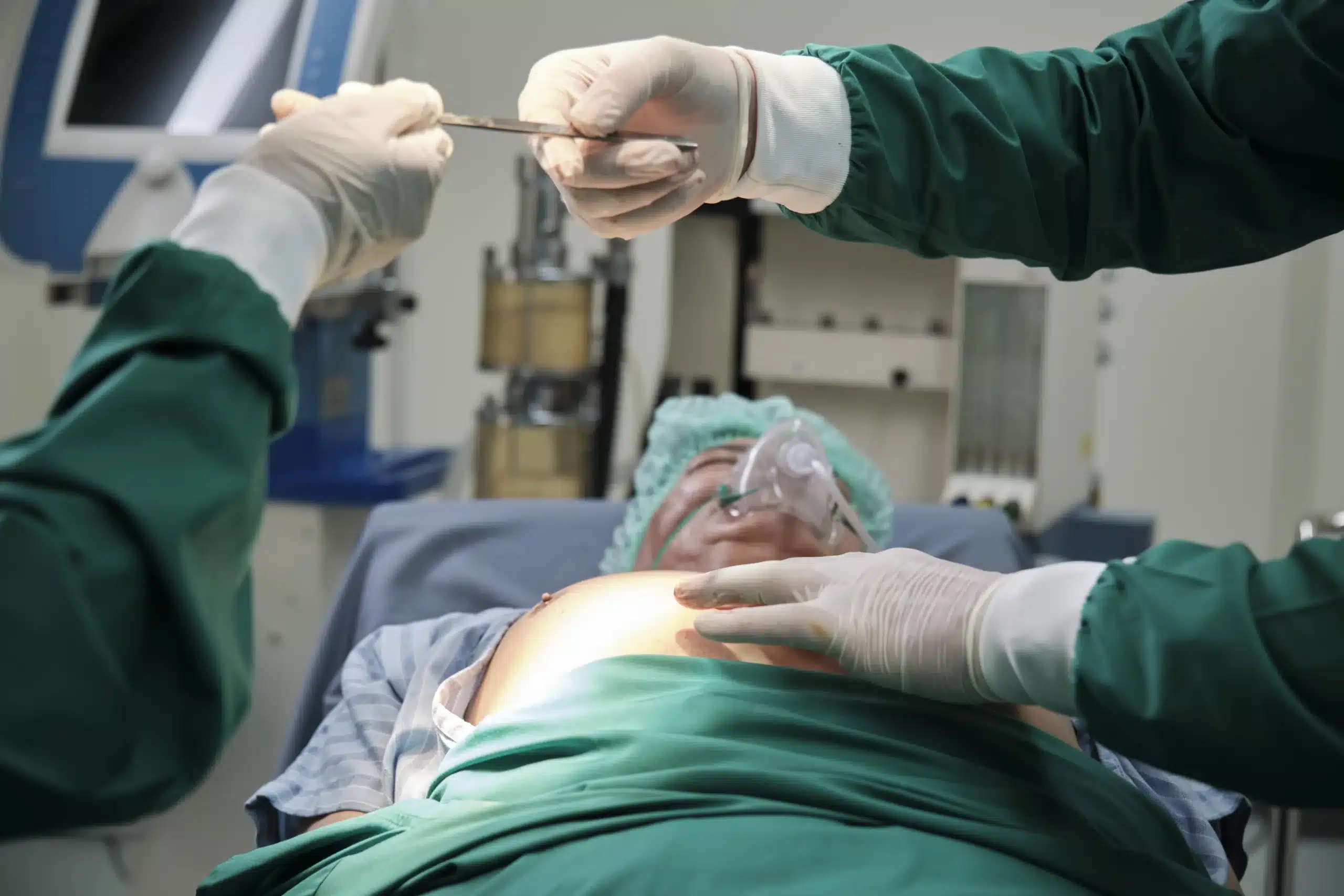Ready to gain essential lifesaving skills? This comprehensive guide breaks down everything you need to know about Basic Life Support (BLS) certification, from understanding key skills and choosing the right class format to navigating costs and finding “BLS classes near me.” Whether you’re a healthcare professional, a concerned caregiver, or simply someone who wants to be prepared for emergencies, this guide will empower you to take action and make a difference. We’ll explore the various types of BLS classes, including in-person, online, and blended learning options, and discuss the benefits of local training. We’ll also address common concerns like scheduling, cost, and the challenges of online learning, offering practical solutions to help you get certified with confidence. Let’s dive in and discover how BLS certification can empower you to save lives.
Key Takeaways
- BLS certification provides essential lifesaving skills: Whether you’re a healthcare provider or simply want to be prepared, BLS training equips you with the knowledge and skills to respond to medical emergencies. Explore different course formats (in-person, blended, or online) to find the best fit.
- Select a reputable BLS training provider: Look for providers affiliated with recognized organizations like the American Red Cross or the American Heart Association. Consider factors such as cost, location, schedule, and student reviews when making your choice.
- Prepare for your BLS class: Gather required materials, complete any assigned pre-course work, and dress comfortably for hands-on practice. Regularly practicing your BLS skills after certification will help you maintain proficiency and confidence in real-world situations.
What is BLS?
Basic Life Support (BLS) is a critical skill set and certification designed for healthcare providers, first responders (like EMTs, firefighters, and police officers), and other professionals in healthcare settings. It goes beyond the basics of standard CPR, equipping you with the knowledge and techniques to handle a wider range of life-threatening emergencies. BLS builds upon CPR by adding advanced procedures for cardiac arrest, respiratory distress, and airway obstructions. Think of it as the next level of lifesaving expertise. At Safety Training Seminars, our BLS certification courses are comprehensive and aligned with the latest American Heart Association guidelines. We proudly serve Santa Rosa, Rohnert Park, and Windsor, California.
Key BLS Skills
BLS training covers essential skills, including adult, child, and infant CPR, using an automated external defibrillator (AED), and clearing obstructed airways. You’ll learn to recognize the signs of someone experiencing cardiac arrest or respiratory distress and take quick, decisive action. The goal is to provide high-quality chest compressions, ensure adequate ventilation, and maintain a clear airway until more advanced medical help arrives. These skills are crucial for anyone working in healthcare or regularly encountering medical emergencies. For more in-depth training, explore our RQI classes designed to improve resuscitation quality.
Why BLS Certification Matters
BLS certification is an essential credential for many healthcare professionals and a valuable asset for anyone who wants to be prepared for a medical emergency. It demonstrates a commitment to high standards of patient care and provides the confidence to act quickly and effectively under pressure. BLS certification also shows employers you have the necessary skills to handle critical situations. Knowing you have the skills to potentially save a life brings a sense of personal empowerment. Take advantage of our low price guarantee at Safety Training Seminars. We offer convenient scheduling and competitive pricing, making it easier than ever to get certified. We also offer discounts for group CPR classes.
BLS Class Types Near You
Choosing the right BLS class format is the first step towards getting certified. Let’s break down the main options available: in-person, online, and blended learning, so you can find the best fit for your schedule and learning style.
In-Person BLS Classes
Traditional in-person BLS certification courses offer a hands-on learning experience, ideal for those who thrive in interactive environments. These classes are usually held in small groups, allowing for personalized instruction and plenty of opportunities to practice your skills with feedback from a certified instructor. This direct interaction can be especially helpful for mastering essential techniques like chest compressions, rescue breaths, and using an AED. In-person classes also provide a structured learning environment and the chance to connect with other healthcare professionals in your area. If you prefer face-to-face learning and value hands-on training, in-person BLS classes might be your best bet.
Online BLS Classes
If you’re juggling a busy schedule, the flexibility of online BLS classes can be appealing. While the American Heart Association (AHA) BLS course requires both an online component and an in-person skills assessment—meaning there’s no fully online, AHA-certified BLS course—the online portion allows you to learn the theoretical material at your own pace. This can be a great way to fit BLS training into a packed schedule. However, it’s important to be aware that online-only options might not meet all workplace requirements or professional licensing standards. For example, online-only CPR training may not satisfy OSHA guidelines for certain professions. Always double-check the specific requirements for your workplace or licensing board before opting for an online-only course.
Blended Learning BLS
Blended learning BLS courses offer a practical compromise between the convenience of online learning and the benefits of in-person instruction. These courses combine online modules with a required in-person skills session. You’ll work through the theoretical part of the course online, learning at your own speed and reviewing material as needed. Then, you’ll attend an in-person session to practice your skills and demonstrate competency to a certified instructor. This blended approach offers flexibility while ensuring you get the hands-on training necessary for real-world scenarios. It’s a great option for those who want a more balanced approach to BLS training.
Find & Choose BLS Classes
Finding the right BLS class involves a bit of research to ensure it meets your needs and provides a high-quality learning experience. Here’s how to get started:
Use Online Search Tools
Start your search online. Use search engines like Google, DuckDuckGo, or Maps to discover local providers. Search variations of “BLS classes near me,” or add specifics like “BLS classes Santa Rosa” if you’re looking in a particular area. Sites like Eventbrite often list local classes and workshops, including BLS training. Don’t forget community forums or social media groups for recommendations.
Check Local Healthcare Facilities
Hospitals, clinics, and community health centers often offer BLS classes to their staff and the public. Contacting these facilities directly or checking their websites can uncover valuable training opportunities. Remember, BLS training isn’t just for healthcare professionals—anyone can benefit from learning these lifesaving skills.
Evaluate Training Provider Reputation
Before committing to a class, do your homework on the training provider. Look for providers affiliated with reputable organizations like the American Heart Association or the American Red Cross. Read reviews and testimonials to understand past participants’ experiences. A provider’s reputation speaks volumes about the quality of training you can expect. Ensure the certification they offer is widely recognized and accepted in your field, if applicable. Choosing a credible provider is essential for a valuable learning experience. A solid training provider will emphasize the importance of BLS certification and its potential to save lives. For example, resources like this article debunking common myths about BLS can help you make an informed decision.
What to Expect in BLS Class
Attending a BLS class is a rewarding experience, especially when you choose a provider focused on quality instruction and hands-on learning. Here’s a glimpse of what you can expect during your BLS certification journey:
Course Structure & Duration
BLS certification courses typically follow a structured format designed for optimal learning. You can find BLS courses for both healthcare providers and aspiring instructors. Two primary course formats exist: in-person and blended learning (a combination of online and in-person sessions). While specifics may vary slightly depending on the training provider, most BLS certifications are valid for two years. Safety Training Seminars offers a variety of courses, including BLS and ACLS, with official certification from the American Heart Association.
Hands-on Practice
BLS courses emphasize hands-on practice to build confidence and competence. Expect a dynamic learning environment that combines classroom instruction with practical skill-building exercises. The curriculum often covers essential skills such as adult, child, and infant CPR, proper AED usage, and the seven steps of CPR. This blended approach ensures you grasp the theoretical knowledge and develop the muscle memory needed to perform BLS effectively. Safety Training Seminars offers discount group classes for hands-on practice.
Assessment & Certification
To obtain your BLS certification, you’ll need to demonstrate your proficiency through an assessment process. This typically involves an in-person skills assessment. While some course portions may be completed online, a fully online, AHA-certified BLS course isn’t available. Upon successful completion of the course and assessment, you’ll receive your certification card immediately. This card validates your BLS skills and knowledge. Safety Training Seminars also offers RQI classes and a low price guarantee. Check out our BLS and ACLS courses.
BLS Training Costs & Value
Getting BLS certified is an investment in your skills and the safety of those around you. Let’s break down the costs involved and why it’s worthwhile.
Average BLS Class Prices
You’ll find that the average cost for a Basic Life Support (BLS) class is around $75. This price is pretty standard across different training providers, making BLS certification accessible to most people. Our BLS certification classes are competitively priced, and we encourage you to compare our rates.
Factors Affecting Cost
While cost is often a concern, remember that BLS training provides long-term value. Think of it as an investment in your ability to respond effectively during emergencies. This training equips you with essential skills to potentially save lives, whether at home, in the workplace, or out in your community. This knowledge extends far beyond the initial price tag. Check out our low price guarantee to see how we prioritize affordable, high-quality training.
Discounts & Group Rates
Looking to train a team or group of friends? Many organizations, including ours, offer discounts for group BLS training. This can be a great way to lower the cost per person while learning together. Contact us for more information on our group discounts and how we can customize a training session. We’re committed to making BLS training accessible to everyone in Santa Rosa, Rohnert Park, and Windsor.
Get BLS Certified
So, you’re ready to get your BLS certification—great! It’s a valuable credential whether you’re a healthcare provider or simply want to be prepared for emergencies. This section breaks down the process, from signing up for a class to maintaining your skills long-term.
Steps to Certification
Getting BLS certified is straightforward. First, find a reputable training provider. Safety Training Seminars offers BLS certification courses right here in Santa Rosa, covering everything from CPR to using an AED. Other respected organizations like the American Red Cross and the American Heart Association also offer various course formats. You can choose from in-person classes, online learning, or a blended approach combining both. This flexibility makes it easy to fit training into your schedule. Once you’ve chosen a course and provider, simply register and complete the training.
Certification Renewal
BLS certifications typically last for two years. To stay current with the latest guidelines and best practices, you’ll need to renew your certification before it expires. Many providers, including the American Red Cross, offer recertification courses. It’s a good idea to plan and register for your recertification course a few weeks before your current certification lapses.
Maintain Your Skills
Even with certification, regular practice is key to maintaining your BLS skills. Think of it like any other skill—the more you use it, the more confident and effective you’ll be in a real emergency. The Red Cross offers helpful refresher materials and resources to help you stay sharp. Consider incorporating regular practice sessions into your routine, either individually or with a group. This will help you stay prepared and ready to respond effectively when it matters most.
Prepare for Your BLS Class
Getting ready for your BLS class involves a little more than just signing up. Thinking ahead about what to expect and how to prepare can make a real difference in how much you get out of the experience. Here’s a breakdown of how to get ready:
Required Materials
First things first, gather your materials. While specifics might vary based on whether you’re taking an in-person, blended, or online course (through providers like the American Red Cross), some things are pretty standard. Check with your chosen training center—like Safety Training Seminars—for a list of required materials. This often includes a student handbook and any necessary access codes for online components. Having everything ready beforehand lets you focus on learning the material.
Pre-Course Study
Most BLS courses, especially those adhering to American Heart Association guidelines, involve some pre-course work. This often means completing online modules before your in-person skills session. Don’t underestimate this part! It lays the foundation for the practical skills you’ll be learning. Set aside dedicated study time to absorb the information effectively. Remember, demonstrating your skills in person is a key part of AHA-certified BLS training.
Physical & Mental Prep
BLS training is hands-on. You’ll be practicing techniques like CPR, using an AED, and clearing airways. Dress comfortably in clothes that allow for a full range of motion. It’s also a good idea to get a good night’s sleep before class. Being well-rested helps you focus and retain information. Mentally preparing yourself is important too. BLS covers life-saving skills, and the scenarios you’ll encounter can be intense. Knowing what to expect can ease any anxiety and allow you to fully engage in the learning process. Think of it as a chance to build confidence in your ability to respond to emergencies.
Top Local BLS Trainers
Finding the right BLS training provider is key to receiving high-quality instruction and a recognized certification. Here are some reputable organizations and local providers offering BLS classes:
Safety Training Seminars
Safety Training Seminars, based in Santa Rosa, offers various BLS certification courses designed for both healthcare professionals and the general public. They emphasize hands-on training and real-world scenarios, ensuring participants gain practical skills and confidence in emergencies. Their commitment to small class sizes and flexible scheduling makes them a convenient option for busy professionals and individuals in Santa Rosa, Rohnert Park, and Windsor. Explore their discount group class options for added value. Safety Training Seminars also provides RQI classes and a low price guarantee. If you’re looking for American Heart Association ACLS certification, they offer that too.
American Heart Association
The American Heart Association (AHA) is a nationally recognized leader in BLS training and certification. Their courses are widely accepted by employers and focus on CPR, AED use, and early intervention. The AHA offers various course formats, including in-person classroom sessions and blended learning options.
American Red Cross
The American Red Cross also provides comprehensive BLS training and certification programs. Their courses cover essential life-saving skills, including CPR, AED use, and obstructed airway procedures for adults, children, and infants. The Red Cross offers flexible learning options, such as in-person classes and blended learning.
National Safety Council
The National Safety Council (NSC) offers BLS training programs that meet OSHA workplace requirements. Their courses emphasize critical thinking and problem-solving skills during emergencies, equipping participants with the knowledge and confidence to respond effectively. The NSC provides various training formats, including online and in-person options.
American Safety & Health Institute
The American Safety & Health Institute (ASHI) provides BLS courses focused on practical skills and knowledge for effective emergency response. Their training caters to both healthcare providers and lay rescuers. ASHI offers various course formats, including in-person and online options.
ProTrainings
ProTrainings offers accessible online and in-person BLS certification courses. Their training incorporates interactive video content and hands-on skills assessments. ProTrainings’ flexible scheduling and convenient online options make it a practical choice.
Benefits of Local BLS
Choosing a local BLS certification course offers distinct advantages. It’s not just about convenience—it’s about building connections and accessing resources within your community. Here’s why opting for local BLS training can be a smart move:
Local Healthcare Networking
Taking a local BLS class connects you with other healthcare providers in your area. These classes often attract nurses, doctors, EMTs, and other professionals from nearby hospitals and clinics. Building these professional relationships can be invaluable for career growth and staying updated on local healthcare trends. Plus, an AHA-approved certification is essential for most employers, and a local course like those offered at Safety Training Seminars can help you meet those requirements.
Local Emergency Protocols
BLS training equips you with the skills to respond effectively in medical emergencies. Local classes often tailor their instruction to regional protocols and common emergency scenarios. This ensures you’re well-prepared to handle situations specific to your community. Your training will cover essential skills like using AEDs, basic airway management, and assisting someone who is choking.
Local Resources & Support
Local BLS providers offer more than just certification. They often connect students with ongoing support, refresher courses, and continuing education opportunities within the community. This local network can be a valuable resource throughout your healthcare career. Safety Training Seminars offers group discounts and a low-price guarantee to make training accessible. They also provide specialized courses like RQI to further develop your skills.
Common BLS Concerns
Let’s face it, there are a few common hurdles people think about when considering BLS training. Time constraints, costs, and the challenges of online learning are often top of mind. But many of these concerns can be easily addressed with the right approach.
Scheduling
Finding time for BLS certification can feel tricky, especially for busy professionals. Many training centers recognize this and offer various class schedules to accommodate different needs. Weekend classes, evening courses, and even accelerated options can make fitting BLS training into your schedule much more manageable. Check with your local providers like Safety Training Seminars to see what flexible options they have available.
Cost-Effective Training
While cost is a valid concern, think about BLS certification as an investment in your skills and career. Plus, it can literally be life-saving knowledge. Many training providers offer competitive pricing, and some even have group discounts available. Weigh the cost against the long-term benefits and the peace of mind that comes with being prepared for emergencies. Safety Training Seminars offers a low price guarantee, so you know you’re getting a good deal.
Online Course Challenges
Online BLS courses can be a convenient option, but they’re not without their challenges. Some students find online interfaces clunky or have trouble with the technology. It’s important to remember that the American Heart Association BLS course requires both an online component and an in-person skills assessment—there’s no way around the hands-on portion. If you learn best in a traditional setting, in-person classes are readily available. Blended learning options, which combine online modules with in-person skills sessions, can offer a good balance. Choose the format that best suits your learning style and technical comfort level.
Related Articles
- BLS Recertification Near Me: Your Complete Guide – Santa Rosa CPR Classes
- BLS Certification for Healthcare Providers in Santa Rosa – Santa Rosa CPR Classes
- BLS Classes in Santa Rosa: Your Complete Guide – Santa Rosa CPR Classes
- BLS HeartCode Santa Rosa: Your Certification Guide – Santa Rosa CPR Classes
- BLS Classes in Rohnert Park: Your Complete Guide – Santa Rosa CPR Classes
Frequently Asked Questions
What’s the difference between BLS and CPR? CPR is a core component of BLS, but BLS encompasses a broader range of skills. Think of BLS as the next level up, adding techniques for airway management, AED use, and team dynamics during resuscitation. It’s designed for healthcare providers and those in medical settings, while CPR training is valuable for everyone.
How long does BLS certification last, and how do I renew it? BLS certification is typically valid for two years. To renew, you’ll need to take a recertification course before your current certification expires. This ensures your skills and knowledge are up-to-date with the latest guidelines.
What if I have a busy schedule? Are there flexible BLS course options? Absolutely! BLS courses are offered in various formats to accommodate busy schedules. You can find weekend and evening classes, accelerated courses, and blended learning options that combine online modules with shorter in-person skills sessions.
Are online BLS courses accepted everywhere? While online components are common in many BLS courses, a fully online BLS certification from the American Heart Association isn’t available. AHA-certified BLS requires an in-person skills assessment. Check with your employer or licensing board to ensure any online or blended learning option meets their specific requirements.
How much does a BLS class cost, and are there any discounts? BLS classes typically cost around $75, though prices can vary. Many providers offer discounts for groups, so if you’re training with colleagues or friends, be sure to ask. It’s always a good idea to compare prices and check for any low-price guarantees or special offers.
